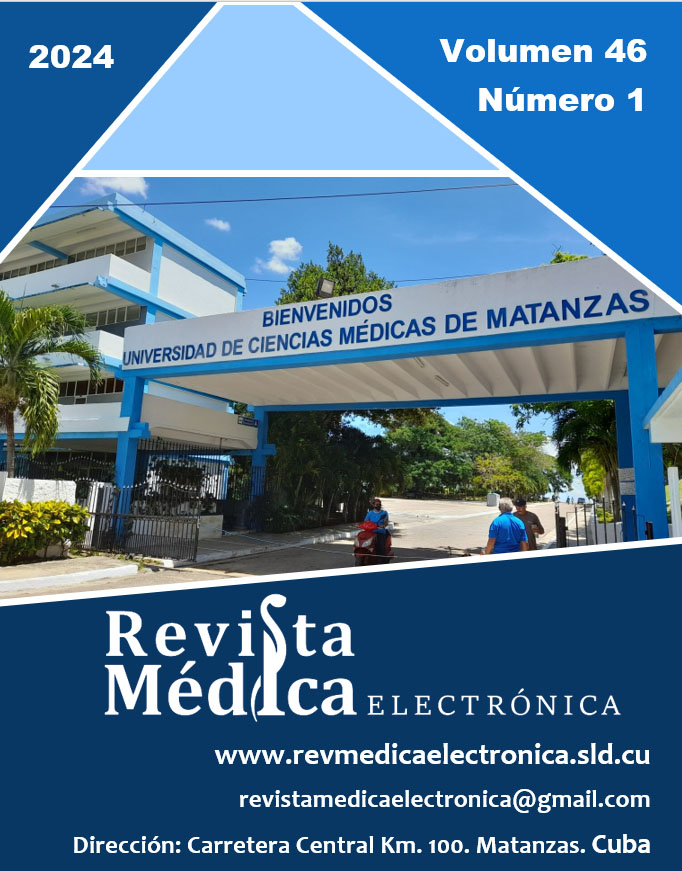Strengths, opportunities, weaknesses and threats of the oral health situation analysis
Keywords:
oral health situation analysis, SWOT analysis, Pestel analysisAbstract
Introduction: The analysis of oral health situation is a scientific tool for dental services.
Objective: To identify the strengths, opportunities, weaknesses and threats of the oral health situation analysis.
Methods: A qualitative research was carried out from July 2018 to 2020 in the province of Matanzas, Cuba. Pestel and SWOT analyses were applied to identify strengths, opportunities, weaknesses and threats of the oral component of the health situation analysis, and to assess opportunities for improvements and risk. Team building techniques were used to foster cooperation between the members of each team, and brainstorm, with the informed consent of the participants. Ethical principles were met.
Results: Six strengths were identified referring to health programs, the instruments to collect information and the descriptive stage of the process, as well as 13 weaknesses (areas of improvement) concerning the analytical and evaluative stage, the professional competencies for qualitative research, the deficient use of information and communication technologies, in addition to the lack of tools to achieve the integration between the doctor and the stomatologist with the community and other sectors.
Conclusions: The strengths, threats, weaknesses and opportunities identified contributed to visualize a successful strategy for the improvement of the studied process. However, the PesteL analysis revealed that, given the economic, social, technological, ecological and legal transformations of the country, the adaptation strategy has greater feasibility in the current context.
Downloads
References
2. Rodríguez-Calzadilla A, Delgado-Méndez L. Programa Nacional de Atención Estomatológica Integral a la población. Rev Cubana Estomatol [Internet]. 1995 [citado 08/05/2022];32(1). Disponible en: http://www.revestomatologia.sld.cu/index.php/est/article/view/2840
3. Martínez Calvo S. Análisis de la Situación de Salud como instrumento en la política sanitaria cubana. Rev Cub Salud Pública [Internet]. 1998 [citado 08/05/2022];24(1):19-22. Disponible en: http://scielo.sld.cu/scielo.php?script=sci_arttext&pid=S0864-34661998000100003
4. Naipe Delgado M, Salabert Tortoló I, Martínez Abreu J, et al. La COVID 19, los Determinantes Sociales de la Salud y las Declaraciones de Alma Atá 1978 y Astaná, Kazajistán 2018. Rev Méd Electrón [Internet]. 2020 [citado 08/05/2022];42(5). Disponible en: https://revmedicaelectronica.sld.cu/index.php/rme/article/view/4184
5. Martínez-Abreu J. Una reflexión necesaria acerca del enfoque social en el análisis de la situación de salud bucal. Rev Cub Salud Pública [Internet]. 2017 [citado 08/05/2022];43(3). Disponible en: http://www.revsaludpublica.sld.cu/index.php/spu/article/view/543
6. Martínez-Calvo S. Acerca del artículo publicado que se refiere al análisis de situación de la salud bucal. Rev Cub Salud Pública [Internet]. 2018 [citado 04/05/2022];44(1). Disponible en: https://revsaludpublica.sld.cu/index.php/spu/article/view/1195/1010
7. Herrera J, Lozano LC. Promoción y mantenimiento de la salud en el barrio: Análisis DOFA de las intervenciones colectivas. Salud Sociedad Uptc [Internet]. 2021 [citado 18/10/2022];6(1):1-16. Disponible en: https://revistas.uptc.edu.co/index.php/salud_sociedad/article/view/12001
8. Lana Cisneros JE, Espinoza Freire L, González Chico MG. Análisis Pestel del e-learning en la educación en la salud durante la Covid-19. Conrado [Internet]. 2021 [citado 08/05/2022];17(S2):395-402. Disponible en: https://conrado.ucf.edu.cu/index.php/conrado/article/view/2032
9. Acurio Hidalgo G, Bosquez Remache J, Cacpata Calle WA. Análisis Pestel en el impacto del Covid-19 en la educación superior. Conrado [Internet]. 2021 [citado 08/05/2022];17(S1):440-8. Disponible en: https://conrado.ucf.edu.cu/index.php/conrado/article/view/1801
10. Liebowitz SJ, de Meuse KP. The Application of Team Building. Human Relations. 1982;35(1):1-18. DOI: 10.1177/001872678203500102.
11. Mejía Rondón FJ. Desarrollo de procesos de gestión del conocimiento dirigidos al personal de salud de la Fundación Clínica a través de ciclos de socialización, implementación, evaluación de la adherencia y ajuste de protocolos de atención del paciente [tesis en Internet]. Santander: Universidad Autónoma de Bucaramanga; 2019 [citado 08/05/2022]. Disponible en: http://hdl.handle.net/20.500.12749/12387
12. Fleites Did TY, Gispert Abreu EA, Quintero Fleites EJ, et al. Factores del desarrollo de intersectorialidad para la promoción de salud bucodental en niños de preescolar. Medicentro [Internet]. 2020 [citado 19/04/2022];24(2):320-36. Disponible en: https://www.medigraphic.com/cgi-bin/new/resumen.cgi?IDARTICULO=98755
13. Cassetti V, Paredes-Carbonell JJ. La teoría del cambio: una herramienta para la planificación y la evaluación participativa en salud comunitaria. Gac Sanit [Internet]. 2020 [citado 10/10/2024];34(3):305-7. Disponible en: https://scielo.isciii.es/scielo.php?script=sci_abstract&pid=S0213-91112020000300014
14. Organización Panamericana de la Salud. Las funciones esenciales de la salud pública en las Américas. Una renovación para el siglo XXI. Marco conceptual y descripción [Internet]. Washington, DC: OPS; 2020 [citado 10/10/2024]. Disponible en: https://iris.paho.org/handle/10665.2/53125
15. Comisión Económica para América Latina y el Caribe. Construir un futuro mejor: acciones para fortalecer la Agenda 20-30 para el Desarrollo Sostenible. Cuarto informe sobre el progreso y los desafíos regionales de la Agenda 2030 para el Desarrollo Sostenible en América Latina y el Caribe [Internet]. Santiago de Chile: Comisión Económica para América Latina y el Caribe; 2021 [citado 19/04/2022]. Disponible en: http://hdl.handle.net/11362/46682
Downloads
Published
How to Cite
Issue
Section
License
All content published in this journal is Open Access, distributed under the terms of the CC BY-NC 4.0 License.
It allows:
- Copy and redistribute published material in any medium or format.
- Adapt the content.
This will be done under the following terms:
- Attribute the authors' credits and indicate whether changes were made, in which case it must be in a reasonable way.
- Non-commercial use.
- Recognize the journal where it is published.
The copyrights of each article are maintained, without restrictions.






